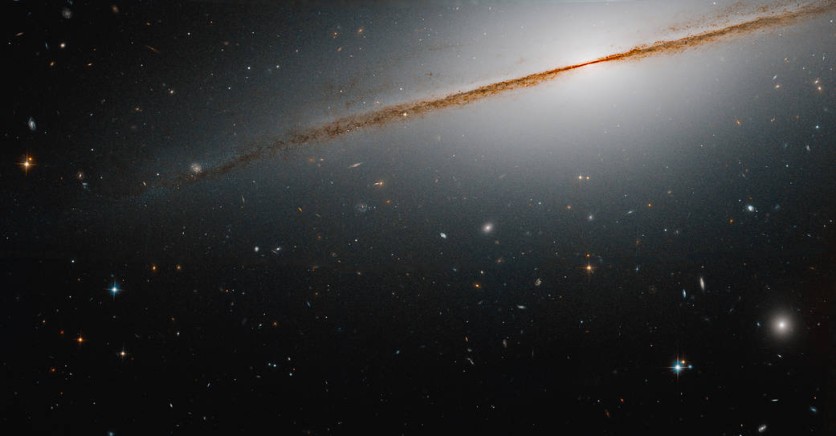One of the magics of NASA's Hubble Space Telescope is allowing astronomers to revel at galaxies in all their glorious details - from shapes, sizes, colors, and almost every angle - and the Telescope did not fail to provide how a galaxy is viewed on a fascinating perspective when it revealed a "dazzling slice of the universe."

Halo of Gas and Stars
NASA released on Thursday, May 12, the picture of "Little Sombrero," which is also known as NGC 7814 or Caldwell 43.
Featured amidst a sprinkled backdrop of various remote galaxies, the Little Sombrero holds a shining central bulge, a thin disk filled with dust, and a radiating halo of gas and stars stretched widely out into space.
According to NASA, the Little Sombrero is roughly 40 million light-years away from our planet, it is also 80,000 light-years-wide, and billions of years old.
This glowing spiral was named after the grandiose appearance of the Sombrero galaxy, which looked like a "broad-brimmed Mexican hat." If taken a look at its edge, the galaxy is found just million light-years away that appears much larger than the Little Sombrero.
However, NASA noted that they are nearly the same size, their distance just makes them appear larger or smaller.
The image released on NASA's website is collated from visible and infrared observations that were captured by Hubble's Advanced Camera for Surveys back in 2006. These observations served as assistance for astronomers to study the galaxy's stellar populations, and to raise awareness on the evolution of different galaxies like Sombrero.
Read Also : NASA Snaps Intense Solar Flare from the Sun
A Tilted Majestic Galaxy
The Majestic Sombrero galaxy is also known as Messier 104 (M104). It holds a brilliant white, bulbous core that is surrounded by thick dust lanes, which makes up the spinal design of the galaxy. When viewed from planet Earth, specifically at six degrees north of its equatorial plane, the galaxy looks tilted edge-on.

(Photo : NASA/HHT/AFP via Getty Images)
This NASA Hubble Heritage Team image released 02 October, 2003 shows the Sombrero Galaxy. HHT astronomers, who assemble many of the NASA Hubble Space Telescope's most stunning pictures are celebrating their five-year anniversary with the release this image.
M104 defies the limit of naked-eye visibility and can be easily peered at through small telescopes because it has a bright magnitude of +8. This galaxy is found at the southern edge of the abundant Virgo cluster of galaxies and happens to be one of the largest objects in this group, and equivalent to 800 billion suns, according to NASA.
The Sombrero galaxy is 50,000 light-years across and is 28 million light-years from the vicinity of Earth.
Astronomers in the 19th century hypothesized that M104 was just an edge-on disk of luminous gas bordering a young star, a description that denotes how our solar system was made. But in 1912, astronomer V.M Slipher found that Sombrero looked like it was rushing away from Earth at 700 miles per second. Hence, its velocity was an indication that it was a galaxy.
Related Article : NASA James Webb Telescope Captures Dazzlingly Sharp Image of a Galaxy
This article is owned by Tech Times
Written by Joaquin Victor Tacla
ⓒ 2025 TECHTIMES.com All rights reserved. Do not reproduce without permission.




